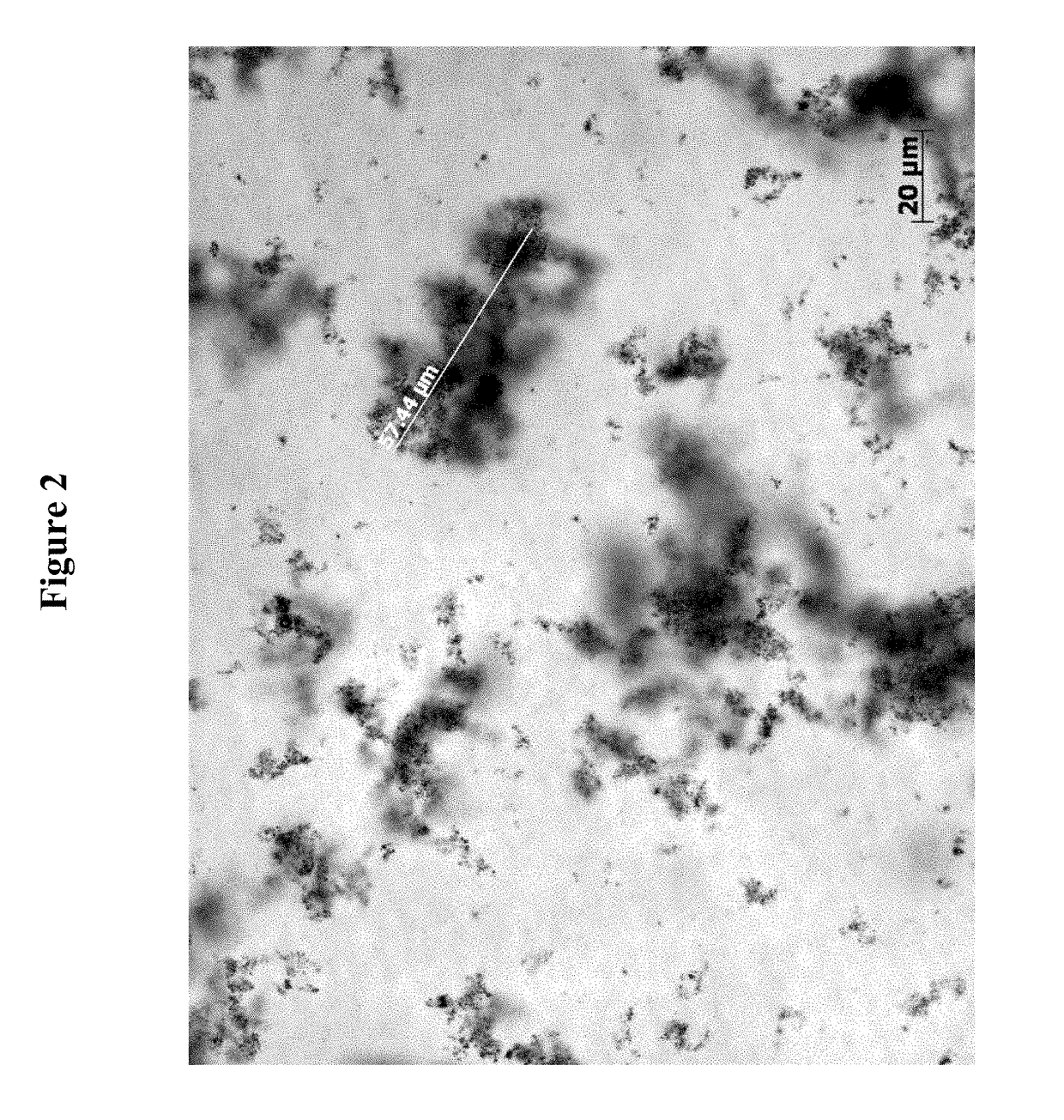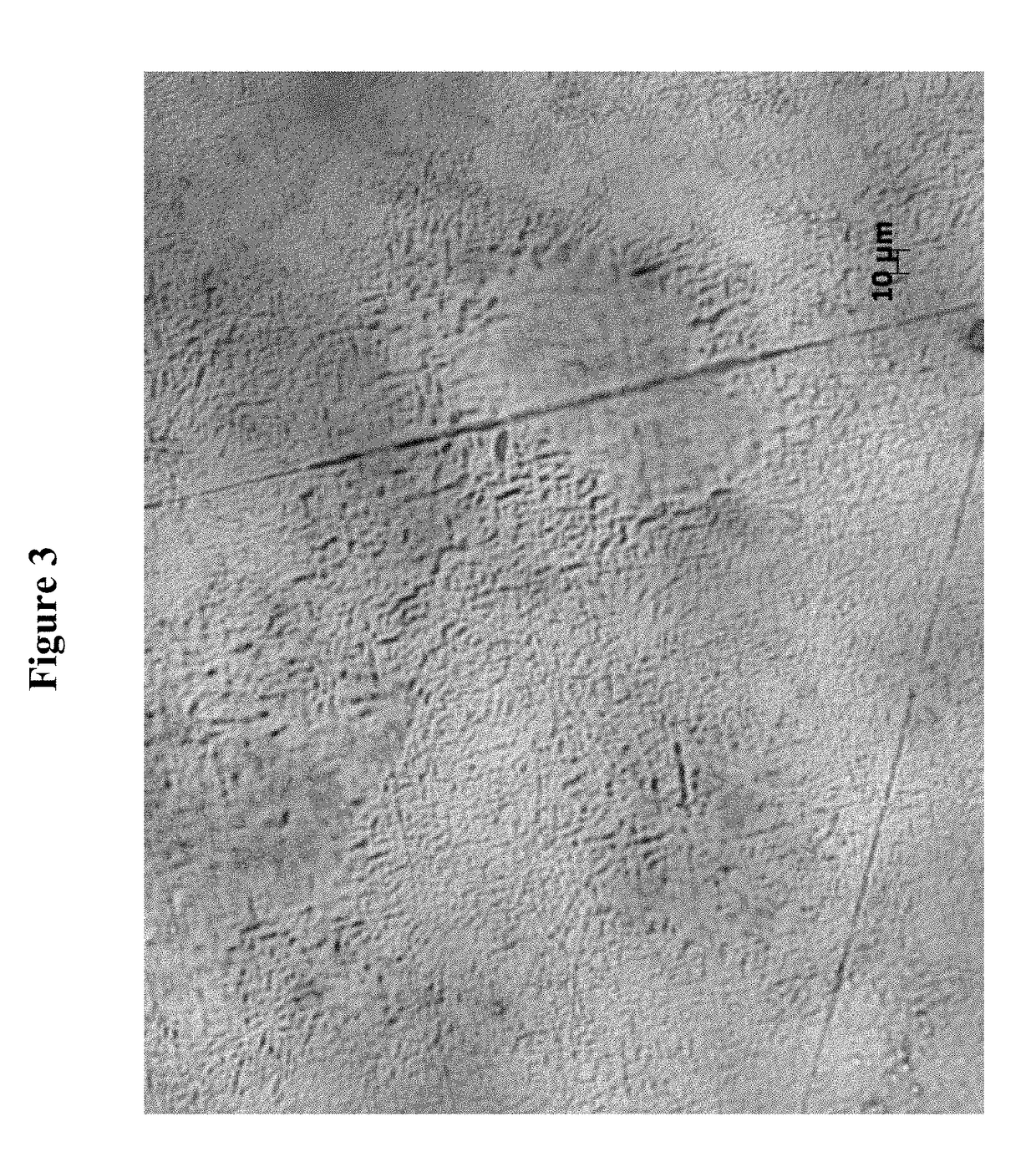Polymeric topical antiseptic compound and method of use
a topical antiseptic and polymer technology, applied in the field of new compounded formulations, can solve the problems of prolonged hospitalization, reduced therapeutic options for these microorganisms, and genetically susceptible to attack,
- Summary
- Abstract
- Description
- Claims
- Application Information
AI Technical Summary
Benefits of technology
Problems solved by technology
Method used
Image
Examples
example 1
[0095]My Shield—Unscented Antimicrobial Liquid Formulations with Aloe Vera
[0096]Several formulations were compounded as prepared with the following components as shown in Table 1 below:
TABLE 1FormulaFormulaFormulaFormulaFormulaNo. 1No. 2No. 3No. 4No. 5CHEMICALWt %Wt %Wt %Wt %Wt %DI Water94.91 94.66 93.91994.6694.659ODTMSPC12.2 2.2 2.2 ——ODTHSPCP20.010.010.01 0.010.01ODTESPC3———2.22.2 PHMBG41.3 1.3 1.3 1.31.3 Silk Protein0.010.01— 0.010.01Caprylyl Glucosicde0.751.0 1.5 1.01.0 Laureth-40.500.500.750.50.5 C12 / C15 Pareth12—————Bzk Usp Nf 50%0.260.260.26 0.260.26Lauramine———— 0.001Citric AcidAloe Vera B Le50.050.050.05 0.050.05Vit E Acetate—————Hyaluronic Acid—— 0.001——Phenoxyethanol——0.01 0.010.01Methyl Paraben0.010.01———Fragrance—————Blue No 1—————11-Octadecanaminium, N,N, Dimethyl-N-[(3-trimethoxysilyl) propyl] chloride = ODTMSPC21-Octadecanaminium, N,N, Dimethyl-N-[(3-trihydroxysilyl) propyl] chloride polymer = ODTHSPCP31-Octadecanaminium, N,N, Dimethyl-N-[(3-triethoxysilyl) propyl] ...
example 2
[0098]My Shield-Unscented Antimicrobial Liquid or Foam Formulation with Aloe Vera
[0099]Several formulations were compounded as prepared with the following components:
[0100]Table 2 below show the formulations of Example 2.
TABLE 2FormulaFormulaFormulaFormulaFormulaNo. 1No. 2No. 3No. 4No. 5ChemicalWt %Wt %Wt %Wt %Wt %DI Water94.93894.68894.67794.67393.868ODTMSPC1—————ODTHSPCP2 0.001 0.001———ODTESPC32.2 2.2 2.2 2.2 3.0 PHMBG41.3 1.3 1.3 1.3 1.3 Silk Protein 0.001 0.001 0.001 0.001 0.001Caprylyl Glucosicde1.0 1.0 1.0 1.0 1.0 Laureth-4—————Polyol 42900.250.500.500.500.50Bzk Usp Nf 50%0.260.260.260.260.26Lauramine—— 0.001 0.0010.01Citric AcidAloe Vera B Le50.050.050.050.050.05Vit E Acetate———— 0.001Hyaluronic Acid——— 0.005—Phenoxyethanol0.010.010.010.010.01Methyl Paraben—————Clay—— 0.001——Blue No 1—————11-Octadecanaminium, N,N, Dimethyl-N-[(3-trimethoxysilyl) propyl] chloride = ODTMSPC21-Octadecanaminium, N,N, Dimethyl-N-[(3-trihydroxysilyl) propyl] chloride polymer = ODTHSPCP31-Octadecana...
example 3
[0102]My shield—Unscented Antimicrobial Gel Formulation with Aloe Vera
[0103]Several formulations as shown in Table 3 were compounded as prepared with the following components:
TABLE 3FormulaFormulaFormulaFormulaFormulaNo. 1No. 2No. 3No. 4No. 5CHEMICALWt %Wt %Wt %Wt %Wt %DI Water 95.179 94.67994.17994.12994.129Hydroxyethylcellulose0.51.01.501.551.55ODTMSPC12.22.22.2 2.2 —ODTHSPCP2—————ODTESPC3————2.2 PHMBG41.31.31.3 1.3 1.3 Silk Protein 0.001 0.001 0.001 0.0010.001Caprylyl Glucosicde0.30.30.3 0.3 0.3 Laureth-40.20.20.2 0.2 0.2 C12 / C15 Pareth12—————Bzk Usp Nf 50% 0.26 0.260.260.260.26Polyol 4290—————Lauramine—————Citric Acid—————Aloe Barbadensis Le5 0.05 0.050.050.050.05Vit E Acetate—————Hyaluronic Acid—————Phenoxyethanol— 0.0100.010.010.01Methyl Paraben 0.01————Fragrance—————Blue No. 1—————1Ex1-Octadecanaminium, N,N, Dimethyl-N-[(3-trimethoxysilyl) propyl] chloride = ODTMSPC21-Octadecanaminium, N,N, Dimethyl-N-[(3-trihydroxysilyl) propyl] chloride polymer = ODTHSPCP31-Octadecanaminium...
PUM
| Property | Measurement | Unit |
|---|---|---|
| thickness | aaaaa | aaaaa |
| viscosity | aaaaa | aaaaa |
| skin softness | aaaaa | aaaaa |
Abstract
Description
Claims
Application Information
 Login to View More
Login to View More - R&D
- Intellectual Property
- Life Sciences
- Materials
- Tech Scout
- Unparalleled Data Quality
- Higher Quality Content
- 60% Fewer Hallucinations
Browse by: Latest US Patents, China's latest patents, Technical Efficacy Thesaurus, Application Domain, Technology Topic, Popular Technical Reports.
© 2025 PatSnap. All rights reserved.Legal|Privacy policy|Modern Slavery Act Transparency Statement|Sitemap|About US| Contact US: help@patsnap.com



